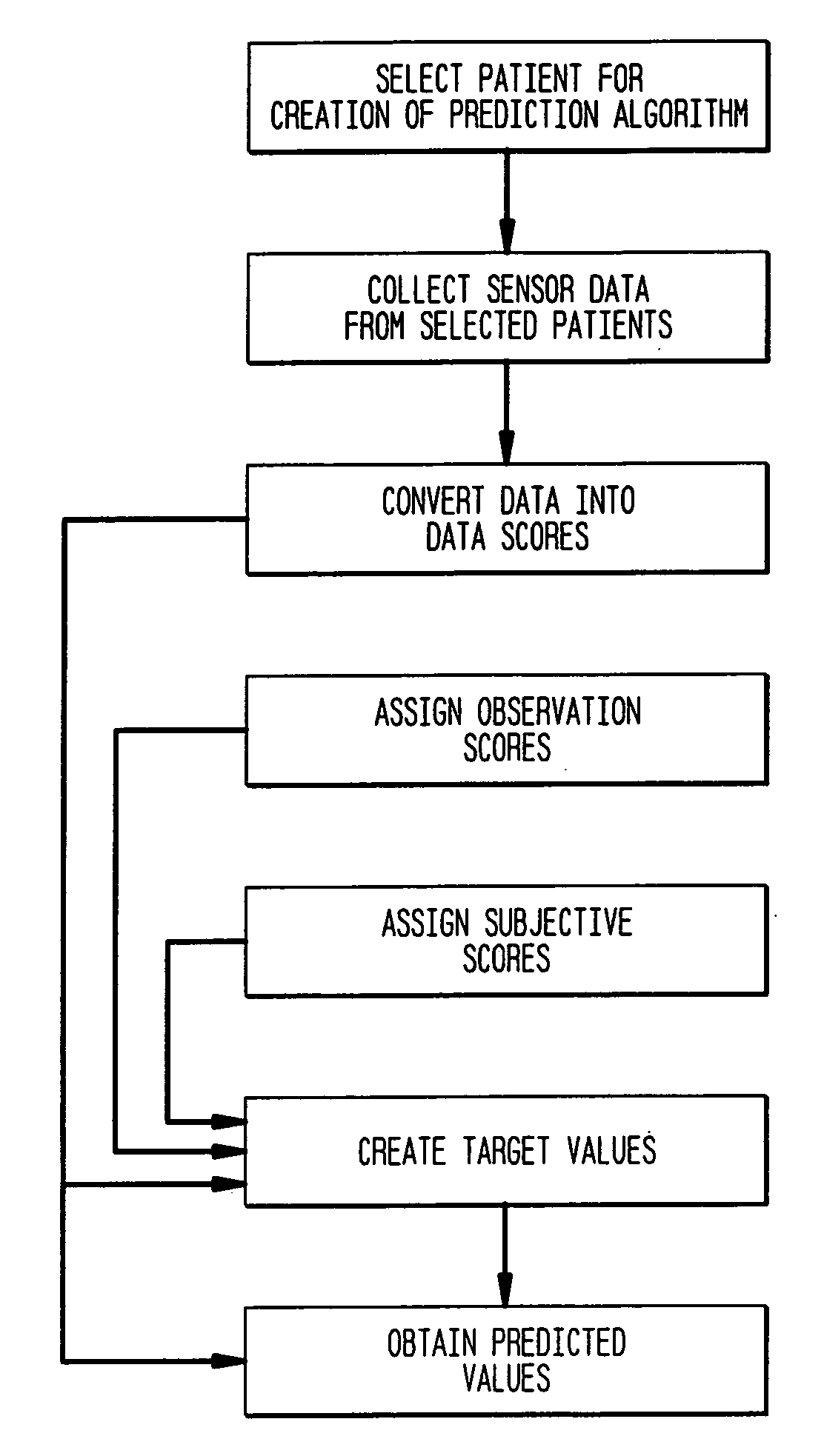Method and apparatus for classification of movement states in Parkinson's disease
a technology for parkinson's disease and movement states, applied in the field of method and apparatus for the classification of movement states in patients with parkinson's disease, can solve the problems of simplistic algorithms that cannot address the complexity, none have been designed in a manner that would be useful for the titration of medications, and cannot solve complex algorithms. the effect of prediction
- Summary
- Abstract
- Description
- Claims
- Application Information
AI Technical Summary
Benefits of technology
Problems solved by technology
Method used
Image
Examples
Embodiment Construction
[0117]Different types of movements in Parkinson's patients tend to have different frequency characteristics. Dyskinesia has been found to be predominately in the lower frequency range (approximately 0.25 Hz-3.5 Hz) and Parkinson's rest tremor at a higher frequency (4-6 Hz). Other types of tremor tend to be in a higher range (essential tremor 7-12 Hz and physiological tremor 8-12 Hz).
[0118]Different types of dyskinesia were found to have different frequencies. For example, dystonia has been found to be in the 0.25-1.25 Hz range and chorea in the 1.5-3.25 Hz. Voluntary activity has been found to be in the below 3.3 Hz range with the majority less than 1 Hz (except walking, which was about 2 Hz). Unfortunately, none of these frequency ranges are “hard and fast”. There is also overlap in frequency range between different types of motion.
[0119]Rather than a single frequency, an accelerometer actually picks up a spectrum of frequencies. A device might be able to use the predominant freque...
PUM
 Login to View More
Login to View More Abstract
Description
Claims
Application Information
 Login to View More
Login to View More - R&D
- Intellectual Property
- Life Sciences
- Materials
- Tech Scout
- Unparalleled Data Quality
- Higher Quality Content
- 60% Fewer Hallucinations
Browse by: Latest US Patents, China's latest patents, Technical Efficacy Thesaurus, Application Domain, Technology Topic, Popular Technical Reports.
© 2025 PatSnap. All rights reserved.Legal|Privacy policy|Modern Slavery Act Transparency Statement|Sitemap|About US| Contact US: help@patsnap.com



